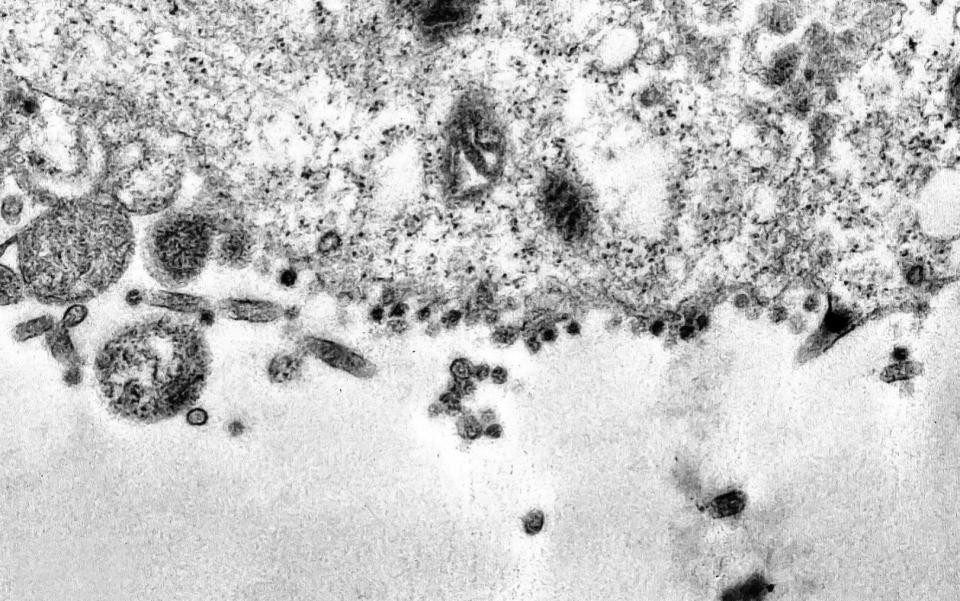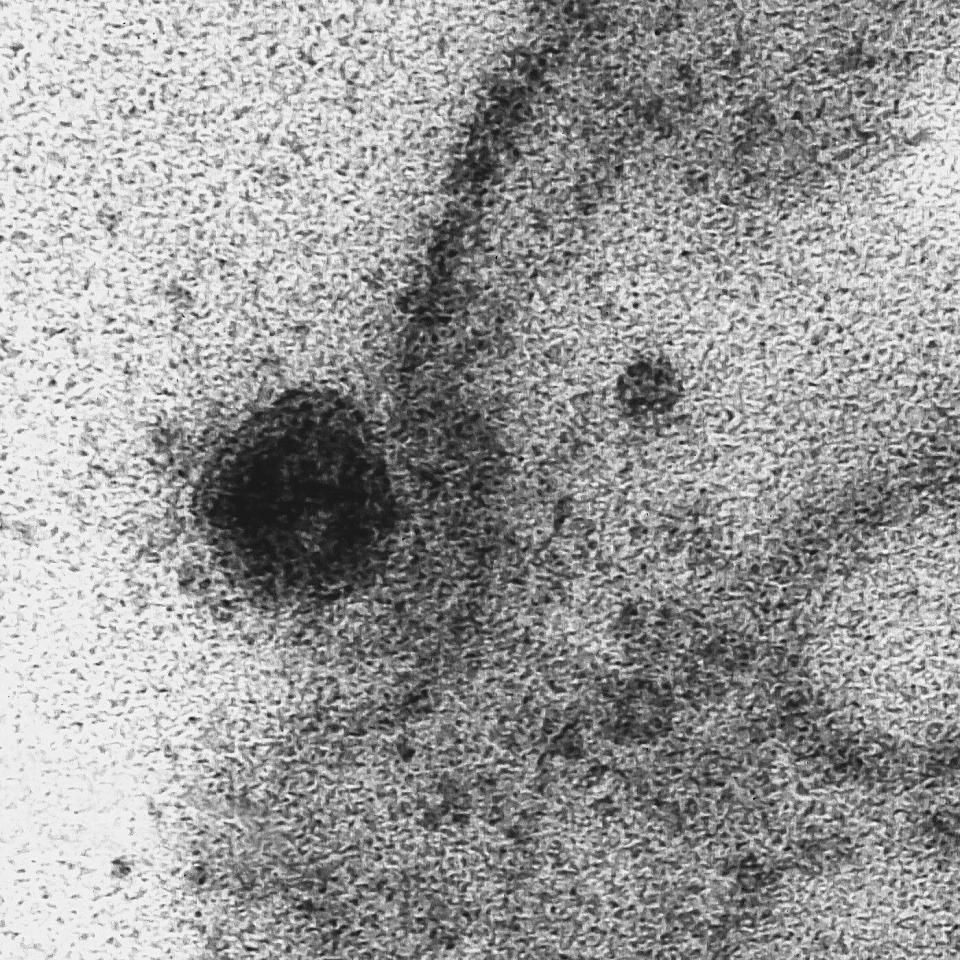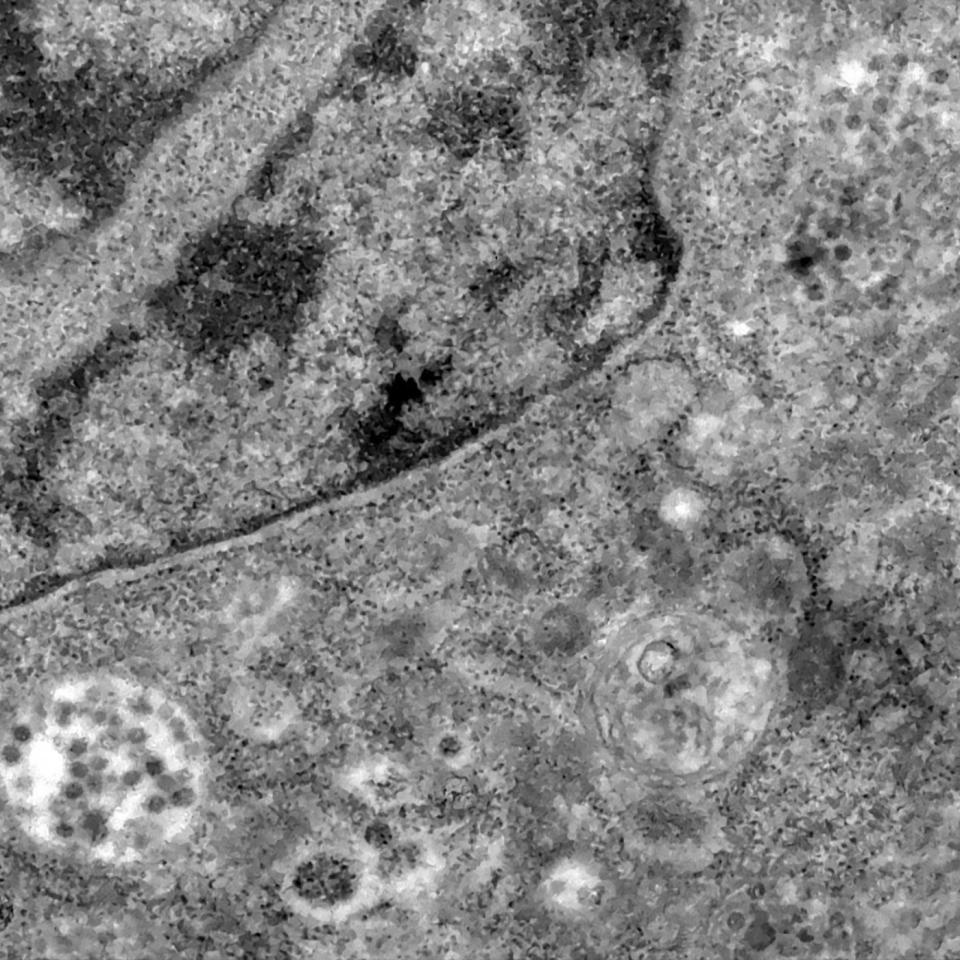The moment the coronavirus infects a healthy cell captured in pictures


Images of the exact moment that the coronavirus infects a cell have been captured by scientists at Latin America’s largest medical research center.
The photographs were taken while experts at the Oswaldo Cruz Foundation (Fiocruz) in Brazil studied the replication of the virus, known as Sars-CoV-2.
Using a transmission electron microscope, a high tech piece of kit which can magnify objects up to two million times, the team captured in detail the process of how a coronavirus infects cells.
The images show a series of dark points that are actually viral particles of the pathogen.
In the first picture (above), these particles are attempting to infect and enter the cytoplasm of the cell - inside which is the cell nucleus that contains its genetic material.
In another image Sars-Cov-2 is beginning the process of infection:

And in a third it is possible to see the viral particles inside the cell:

Fiocruz said in a statement that the cells used were not human but of “vero lineage” - cells that were originally isolated from the African green monkey and are regularly used in cell cultures in laboratories.
“The record is unprecedented in Brazil,” the institute added.
The images come as the global case count nears 1.5 million and almost 90,000 fatalities. Scientists the world over are racing to better understand the virus and develop the vital vaccines and treatments that may bring the pandemic to a close.
“When this began, the word I’d use to describe how we were working is desperation,” Nick Cammack, therapeutics accelerator lead at the Wellcome Trust, said. “But increasingly there is this spirit of collaboration… science is the exit strategy.”
Protect yourself and your family by learning more about Global Health Security

 Yahoo News
Yahoo News 